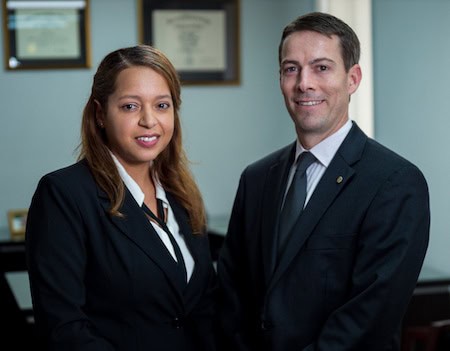 Making the choice not to fight in court is your first step in the right direction.
Making the choice not to fight in court is your first step in the right direction.
Next, you can choose to work with professionals that are aligned with your goals in divorce. Collaboratively trained divorce professionals will treat you and your family with peace, dignity and respect.
These professionals have dedicated their time and resources to help families understand how divorce law applies to their unique circumstances in Florida, and how we can help you to create custom solutions that are fair to you and your spouse.
Step 1: Speak with Your Spouse.
Talk to your spouse about the different options that you have to navigate your divorce process. Be transparent, and let them know that you all can make this decision together. You don’t need to fight in court. You can hire someone to help you through this legal process, and to assure that it is handled properly, and with discretion.
Step 2: Interview A Collaboratively Trained Attorney.
Seek out a local attorney that has decided to focus their law practice on helping families resolve their divorce, without fighting in court. This attorney should have Collaborative Training, and at least ten years of experience practicing in Family Law.
Step 3: Identify “Neutrals” To Assist You.
Use your Collaborative attorney as a trusted guide to help you identify a financial neutral and a mental health facilitator that will provide you and your spouse with much needed support in your divorce process.
Step 4: Explore and Develop Options for Resolution.
Work with your Collaborative team to schedule in person and/or zoom meetings to review all of the issues that need to be addressed in your divorce. Be open and honest to assure that all of the interests of you, your spouse, and your children are discussed. Allow everyone in the room to provide input to help you build multiple options that will meet the needs of your entire family. Rely on your attorney to help you learn what you don’t know, and to help you utilize tried and true resolutions that are win/win. Rely on your mental health professional to help you work through the inevitable “roadblocks” and areas that you and your spouse do not agree. Compromise is not a bad thing. It can be accomplished in a fair manner when everyone involved understands how the law applies, and what the potential different outcomes may be.
Step 5: Prepare a Legally Binding and Custom Settlement Agreement.
Once you reach a framework agreement that identifies all of the most important issues for your family, your finances, and your future, you are ready to reduce it to writing. Rely upon your attorney to draft a Collaborative Marital Settlement Agreement that includes all of the required provisions, and that clearly expresses the agreement that you and your spouse have reached.
Step 6: File an Uncontested Divorce Action & Finalize Your Divorce.
You have reached the finish line. Sit back and allow your attorney to file an uncontested divorce action in your county, he or she will prepare all required pleadings and coordinate a zoom final hearing. You or your spouse will need to appear for a short 10-15 minute hearing to ratify your final agreement. You are now restored to the status of being single.
Step 7: Give Yourself Credit.
You have achieved a successful divorce, without fighting in court. You made the decision not to make an enemy of your spouse. You took the action you needed to maintain peace, respect and dignity. You didn’t do unnecessary harm to your family. You and your former spouse can start your new lives.
Collaborative divorce is an out of court process that serves to help you and your spouse reach fair and private separation of your finances, and to help you build a healthy co-parenting relationship going forward.
If you, or a friend of yours, has questions about Collaborative divorce in Palm Beach County, we are here to help.





